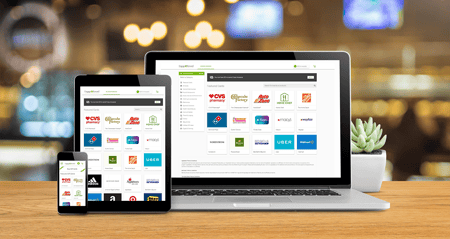As organizations continue to adapt to the evolving landscape of remote and hybrid work, maintaining and enhancing employee engagement has become a pivotal focus. A Gallup report indicates that in 2024, only 31% of U.S. employees were engaged at work, reflecting a significant decline from previous years. This underscores the need for innovative strategies to foster connection, motivation, and satisfaction among remote teams, particularly since 73% of teams are projected to include remote employees by 2028.
The New Meaning of Employee Engagement
The definition of employee engagement has shifted over the last five years. Employee engagement now encompasses a combination of growth and development planning, combined with providing connection to colleagues and clear channels for communication.
Growth and development planning allows employees to stay engaged professionally. When they have a clear growth path and plan to reach their career goals, they begin to see and build that future with their current employer, rather than starting to look elsewhere to achieve their goals.
Company communication is critical for dispersed teams. Creating communication norms at every level of the organization is key to ensure employees feel connected to each other, their teams and organizational leadership. Employee engagement success requires clear communication coming from predictable places on a regular basis.

One effective approach is the strategic use of employee gift cards to incentivize engagement. Considering their versatility and cash-like value, it is unsurprising that gift cards are the preferred reward for 80% of employees. Consider the following strategies to begin implementing gift cards into your corporate engagement program:
1. Conduct Regular Employee Engagement Surveys with Incentives
Understanding the sentiments, needs, and aspirations of your employees is foundational to crafting effective engagement strategies. Regular engagement surveys provide valuable insights into areas requiring attention and improvement. To encourage participation, consider offering small denomination gift cards as incentives for survey completion. This not only boosts response rates but also demonstrates appreciation for employees' time and feedback. For instance, the Engage2Reward™ Choice Card - available through the Engage2Reward™ Gift Card Ordering Platform - allows recipients to select from a wide array of 250+ brands, tailoring the reward to individual preferences and increasing the memorable trophy value.
2. Facilitate Virtual Coffee Breaks
Social interactions play a crucial role in building camaraderie and a sense of belonging among team members. In a remote setting, organizing virtual coffee breaks can emulate informal office interactions. Providing gift cards to popular coffee chains enables employees to enjoy a beverage during these virtual meetups, enhancing the experience. Brands like Dunkin' or Starbucks offer versatile options that cater to diverse tastes, making them ideal choices for such initiatives.
3. Host Engaging Online Team-Building Activities
To foster teamwork and strengthen relationships, consider organizing virtual team-building events such as online games, trivia sessions, or cooking classes. Providing gift cards for necessary materials or as rewards can enhance participation and enjoyment. For example, Blue Apron gift cards can be used to purchase supplies for a virtual cooking class, adding a tangible element to the virtual experience.
4. Develop Comprehensive Employee Rewards and Incentive Programs
Recognizing and rewarding exceptional performance is vital for maintaining motivation and job satisfaction. Implementing a structured rewards program that includes peer-to-peer recognition can democratize the process and ensure timely acknowledgment of achievements. Offering flexible rewards, such as gift cards, allows employees to choose what is most meaningful to them, enhancing the perceived value of the reward. For instance, Walmart gift cards provide a broad selection of products, catering to varied preferences.
5. Celebrate Milestones and Personal Achievements
Acknowledging personal and professional milestones—such as work anniversaries, birthdays, promotions, or completion of major projects—helps employees feel seen and valued beyond their day-to-day responsibilities. These moments present ideal opportunities to strengthen your company culture and increase employee loyalty.
A thoughtful way to celebrate these milestones is by sending personalized gift cards along with a congratulatory message from managers or leadership. The Engage2Reward Platform makes this easy by allowing employers to personalize gift card delivery with heartfelt messages and even videos. When employees feel that their contributions and life events are recognized, it deepens their connection to the organization and boosts overall morale.
Incorporating these strategies can significantly enhance employee engagement in remote settings. By leveraging the versatility and appeal of gift cards, organizations can create personalized and meaningful experiences that resonate with their workforce, leading to increased satisfaction, productivity, and retention.











